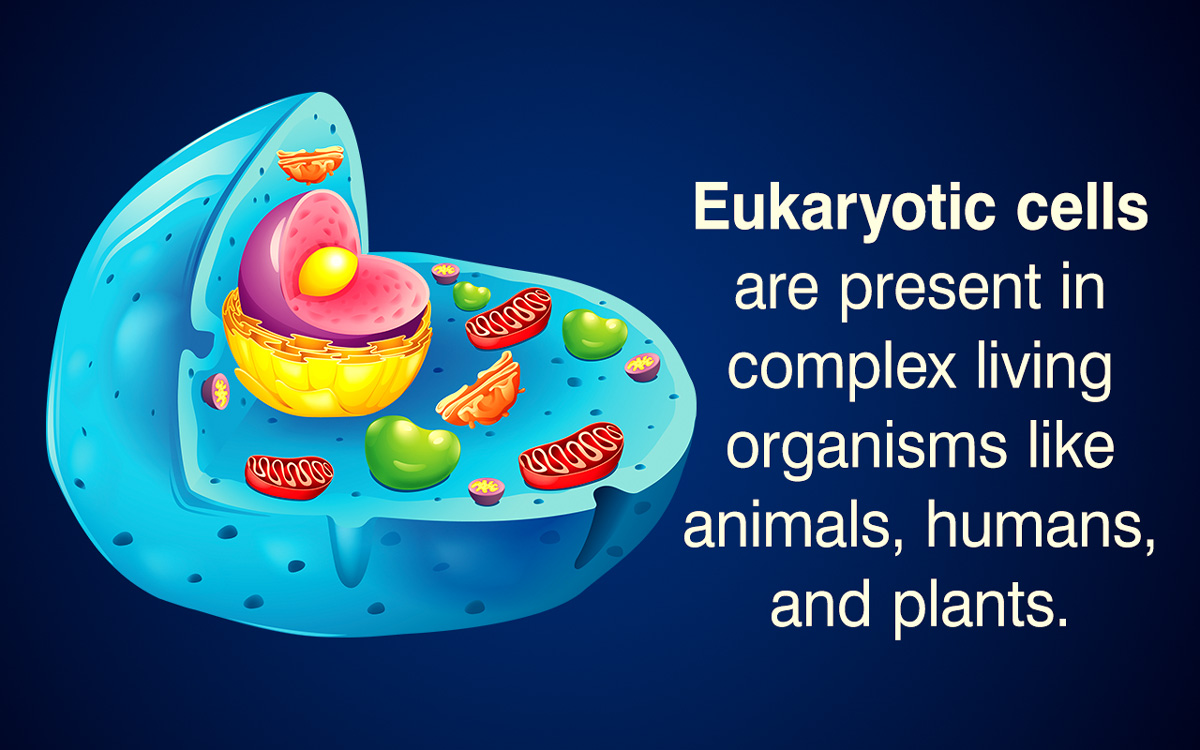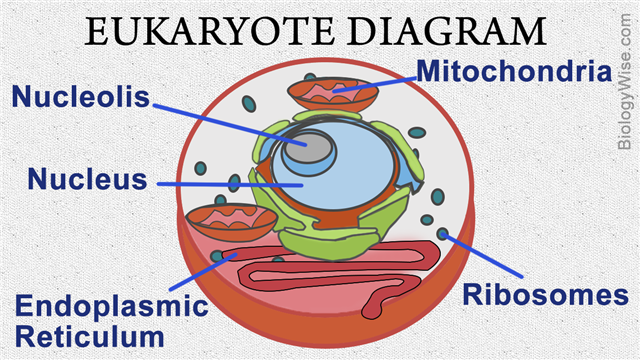
The following article provides information regarding the structure and functions of various cell organelles belonging to the eukaryotic cell.
Eukaryotic cells are present in complex living organisms like animals, humans, and plants. They formed as a result of evolutionary changes that took lace in the prokaryotic cells. You can refer to the following image for understanding the cell structure.
Structure and Functions
If you happen to check the structure of eukaryotic cells under the microscope, you will find that they are made up of a number of cell organelles, which help in the smooth functioning of the overall cell. Essentially a part of all the plants, animals, fungi, algae, and protozoans, these diploid cells are 5 micrometers or more in diameter, and characterized by the presence of a nucleus, which is absent in the prokaryotic organisms.
Cell Wall
It is a distinguishing part of plant cells, and is absent in animals. It imparts rigidity. Its material is different for different plant species with cell shapes being elongated, oval, round, rectangular, or square-shaped.
Cell Membrane
The outermost part of the cell is the cell membrane, which encloses all the cell organelles. Protecting the cell, providing rigidity, and controlling the flow of nutrients within the cells are important functions of the cell membrane.
Cell Cytoplasm
This liquid gel-like substance is called matrix, within which the cell organelles float and/or are embedded. It provides the right environment to carry out all the metabolic reactions.
Nucleus
Eukaryotic cells are considered advanced and complex. The nucleus is made up of genetic material, i.e., the DNA (Deoxyribonucleic acid) and the chromosomes, owing to which it is considered as the brain of the cell. It basically controls all the cell functions, and guides it properly.
Nucleolus
The interior of the nucleus has a dark stained area called the nucleolus, which is responsible for protein formation.
Nuclear Membrane
Peculiar to the eukaryotic cells, the main function of this membrane is to protect the nucleus by formation of a protective sheath around it.
Nucleoplasm
Nucleus is filled with this dense fluid that contains chromatin fibers, chromosomes, and genes that carry the genetic information.
Mitochondria
They are among the largest cell organelles present in the eukaryotic cells. They are characterized by their own Mitochondrial DNA, RNA, and ribosomes; and hence, can self-replicate. It is the key site for production of energy in the form of ATP molecules, and thus aids photosynthesis and respiration.
Plastids
Another peculiar organelle present in eukaryotic plant cells are the plastids. Photosynthesis is the unique process, by which plants prepare their own food with the aid of these organelles. Plants generally contain chloroplasts that are characterized by the presence of a green colored pigment called chlorophyll.
Ribosomes
They are essential for protein synthesis, which includes transcription and translation. All the ribosomes are of 80S type, except the one from mitochondria and plastids, which is of the 70S type.
Lysosomes
They mainly help to undertake phagocytosis, and promote intracellular digestion. They are also responsible for secretion of enzymes, which are necessary for breaking down the cell debris.
Centrosomes
Centrioles contained within the centrosomes are important for the process of initiation of cell division, the result being either mitosis or meiosis.
Endoplasmic Reticulum (ER)
These interconnecting flattened tubular tunnels are of two types: Rough Endoplasmic Reticulum (RER) and Smooth Endoplasmic Reticulum (SER). In combination with the ribosomes, they help in functions related to protein transport. ER is regarded as one of the most important cell organelles after mitochondria.
Golgi Apparatus
Their function includes protein processing so that active protein chains are released whenever required.
Vacuoles
Alike in plants and animals, vacuoles are water-filled organelles responsible for storage.
